Embroidery 101: Finishing the Quilt (Part 1)
After assembling the quilt blocks, it’s time to put the back together, layer, baste, and quilt. It seems like these are several steps, and could each occupy their own post; however, they seem to go one right after the next to me, and so I thought I’d give you all the info at once. But don’t feel rushed to complete it all in a day or two!
For a backing of a single fabric you will need about 3 1/4 yards of fabric. Cut two pieces the length of the quilt, remove the selvage edge from the fabrics and seam the two together. Position the seam where you want it on the back and trim the sides to 2″ wider than the quilt on either side.
For my back I chose to use my 6″ x 6″ square scraps from my quilt top to piece the back. I cut: 1 piece the length of my quilt {about 1 1/2 yard}, removed the salvage edges. Then I cut two 8″ x width of fabric strips. From one of those strips I cut one more 6″ x 6″ square to make the scraps the same length as the back piece. I then seamed the remaining 8″ wide pieces together. For the nine block quilt without a sashing, it uses two yards {note: this will not work for directional fabric}. These three strips became my back, as seen here:
Then, turn your back right side down and lay it out on a smooth surface. While everyone has preferences that are a little different, I will give you my methods and reasoning behind them, but if it doesn’t work for you, just do a little searching and you’ll find a method that does. I like to pin baste my quilt on a rug, that way I don’t scratch up the floor with the pins. I tape the corners of the back to the floor to avoid movement, but I find that just taping the corners is sufficient, there’s no need {for me at least} to tape around the whole back.
Then, as smoothly as possible, lay the batting on top. {Note: I like to roll out my batting, cut it to size with the quilt back on top, then do the actual layering. This helps avoid having to move the batting when it’s already down.} I also like to use Warm N White cotton batting because it is thin, easy to quilt, and has a nice cozy weight to it.
Then center your quilt top on the backing and batting and pin in place. I use straight pins to baste my quilt for a few reasons. They are easy to remove while quilting {since you’re not supposed to stitch over pins}, and safety pins can get sewn down by accident, then threads have to be clipped to remove them {unless you stitch around each pin and never over any at all}.
It is a lot easier to get poked with straight pins, so I recommend wearing quilting or gardening gloves that have rubber palms. Not only will they protect your hands, but they’ll allow you to get a better hold on the quilt.
Another option is spray basting {lots of people swear by it!}, but I live in a small house and worry about the fumes with my toddler. Another is running large stitches through the quilt to baste it. I have quilted one quilt that was basted like this and it worked great, but I don’t have the patience to put the stitches in.
Then, roll your quilt up carefully and start quilting from the center. This will help keep everything from puckering too much. Once you’ve chosen your method and basted your quilt, it’s time to get quilting!
I quilted mine in long straight lines using my walking foot. Instead of making the lines even, I varied the width of each one, so some are closer together and others are further. I also stitched in the ditch right around each embroidery pattern in an octagon. There are a variety of ways to quilt and I cannot begin to go into all of them here. I will say, however, that it is important to use the correct type of sewing machine foot, if you intend to quilt by machine.
Here is a closeup of my quilting:
I know this is a lot to cover in one post, but I wanted to make sure I at least laid out the basics. If you’re new to quilting and have any questions, feel free to leave a comment and I’ll be happy to provide or find an answer for you.
Or, if you know of a fantastic tutorial you’d like to share with everyone, feel free to leave a link in the comments to share with everyone. {Please format your link like this: Link name so that we can click on it!} I’ll be back in a couple days with the final finishing directions. Until then, happy quilting.


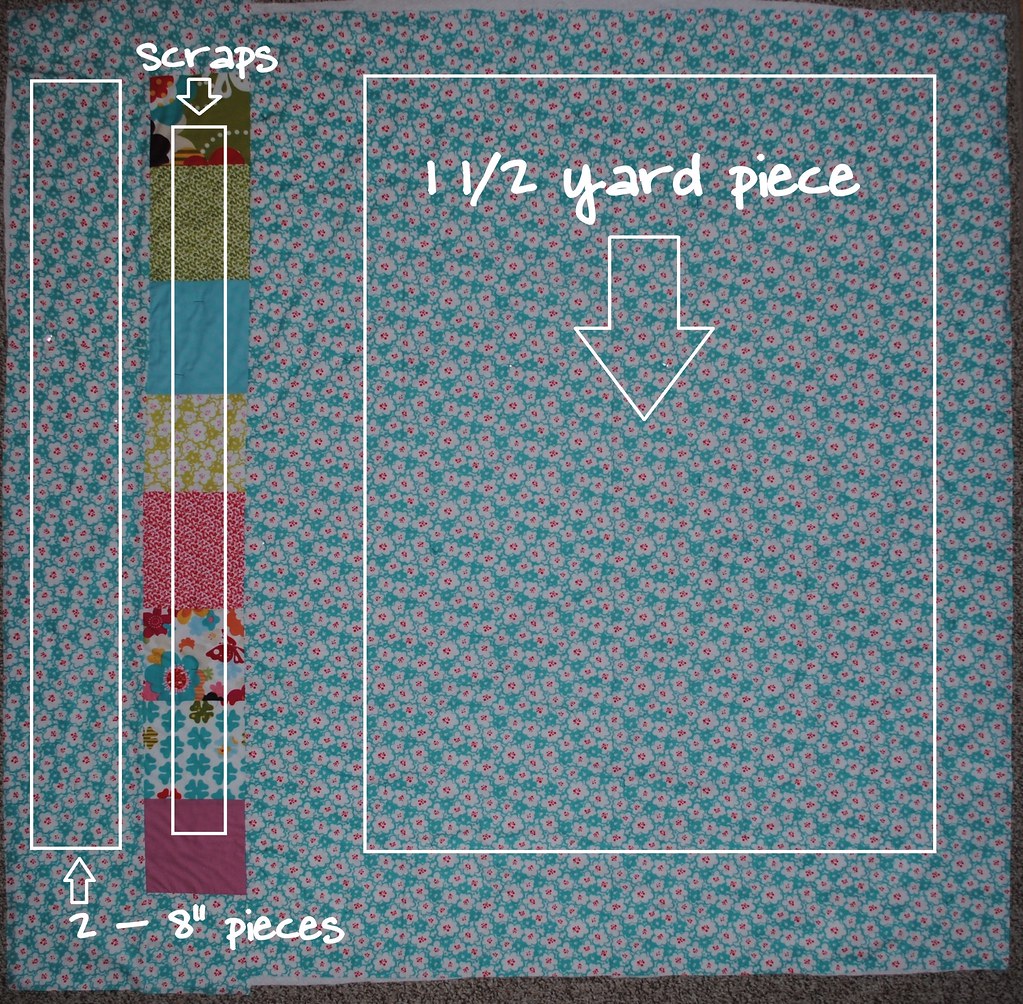
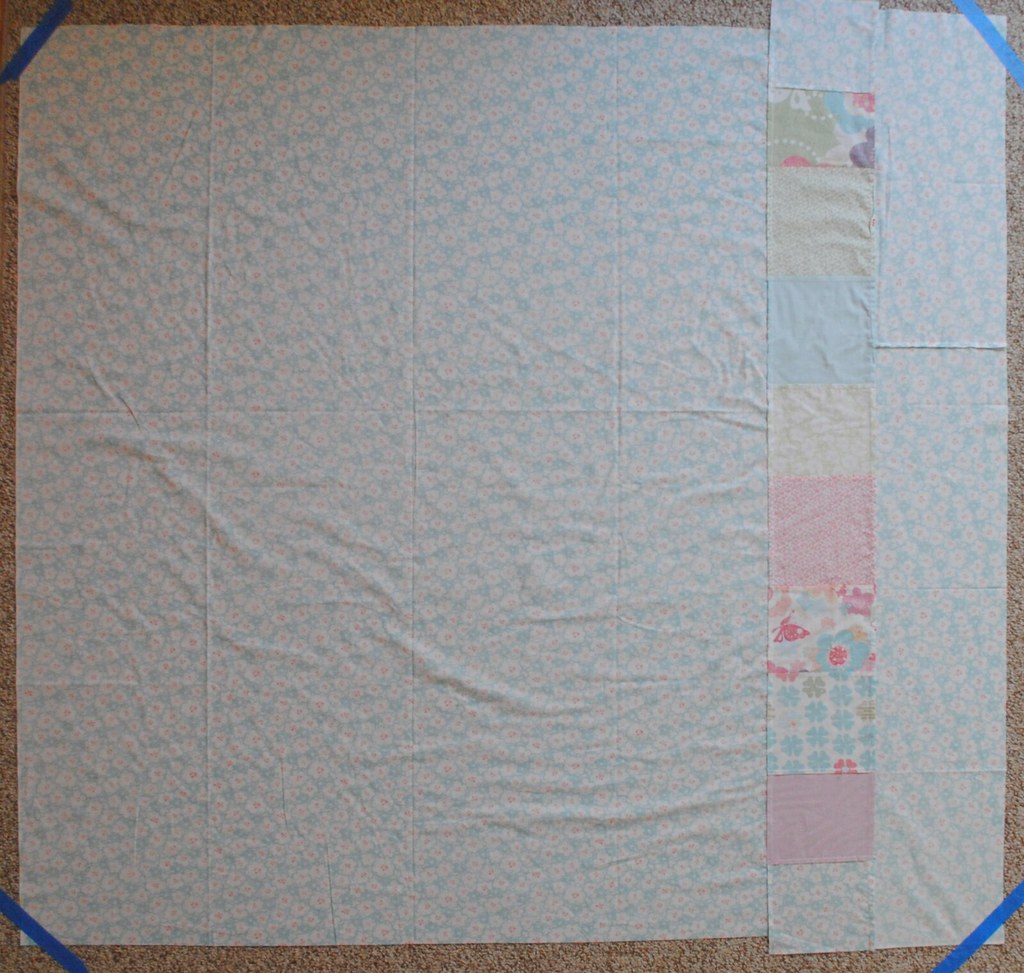
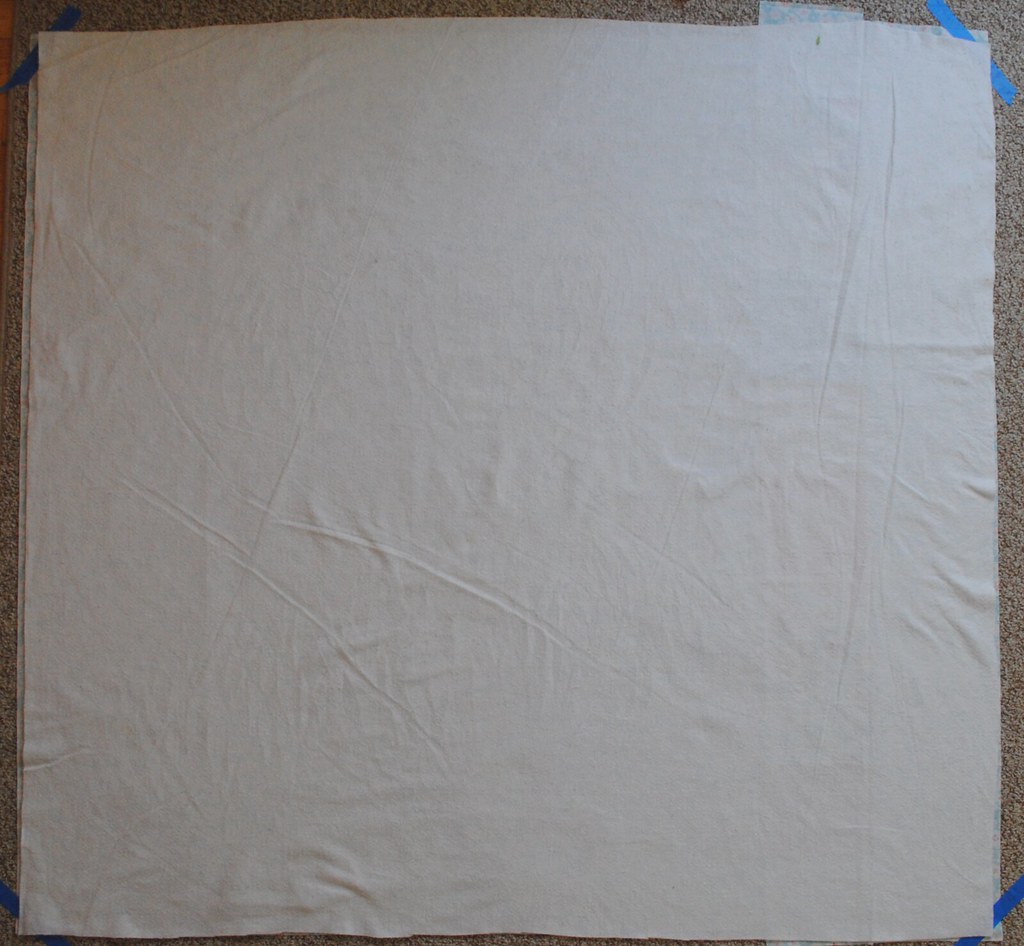
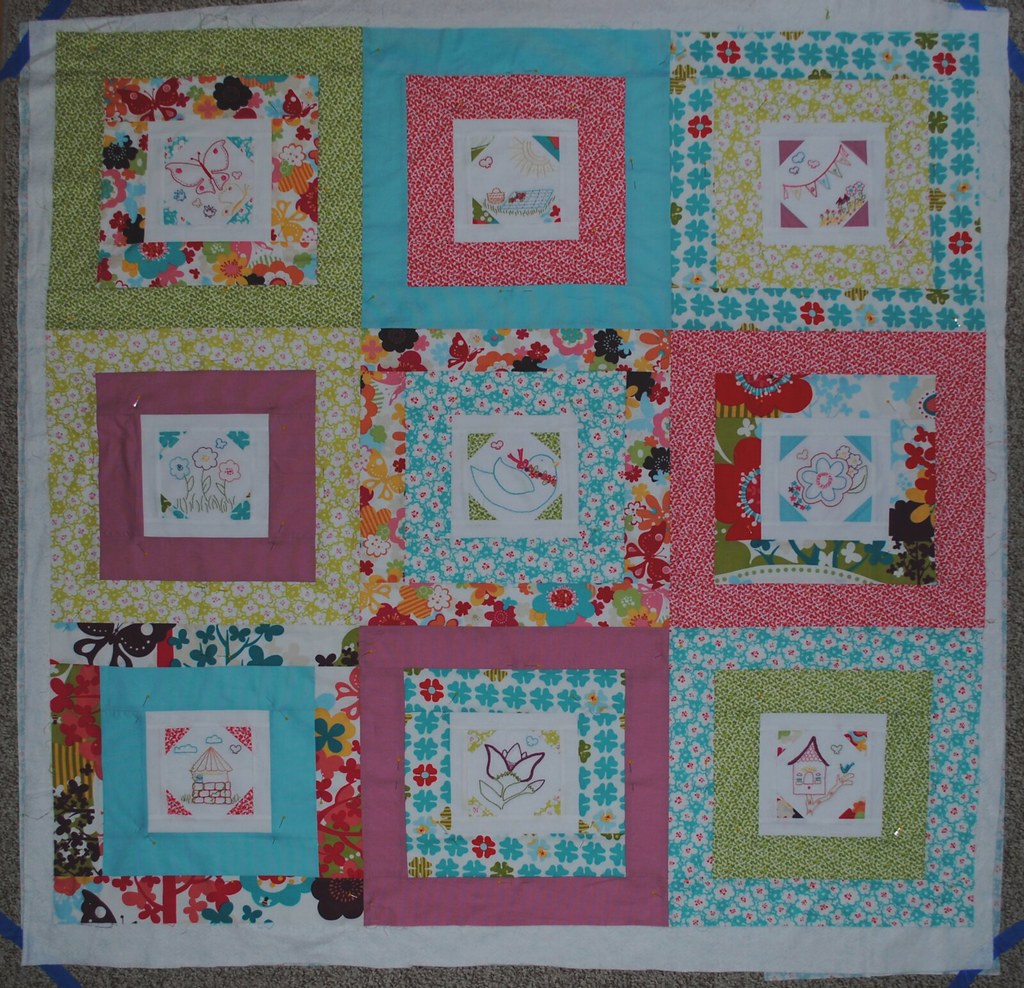
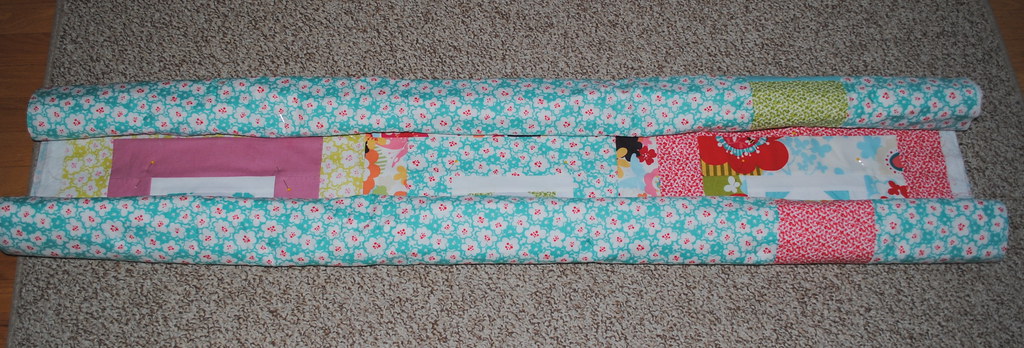
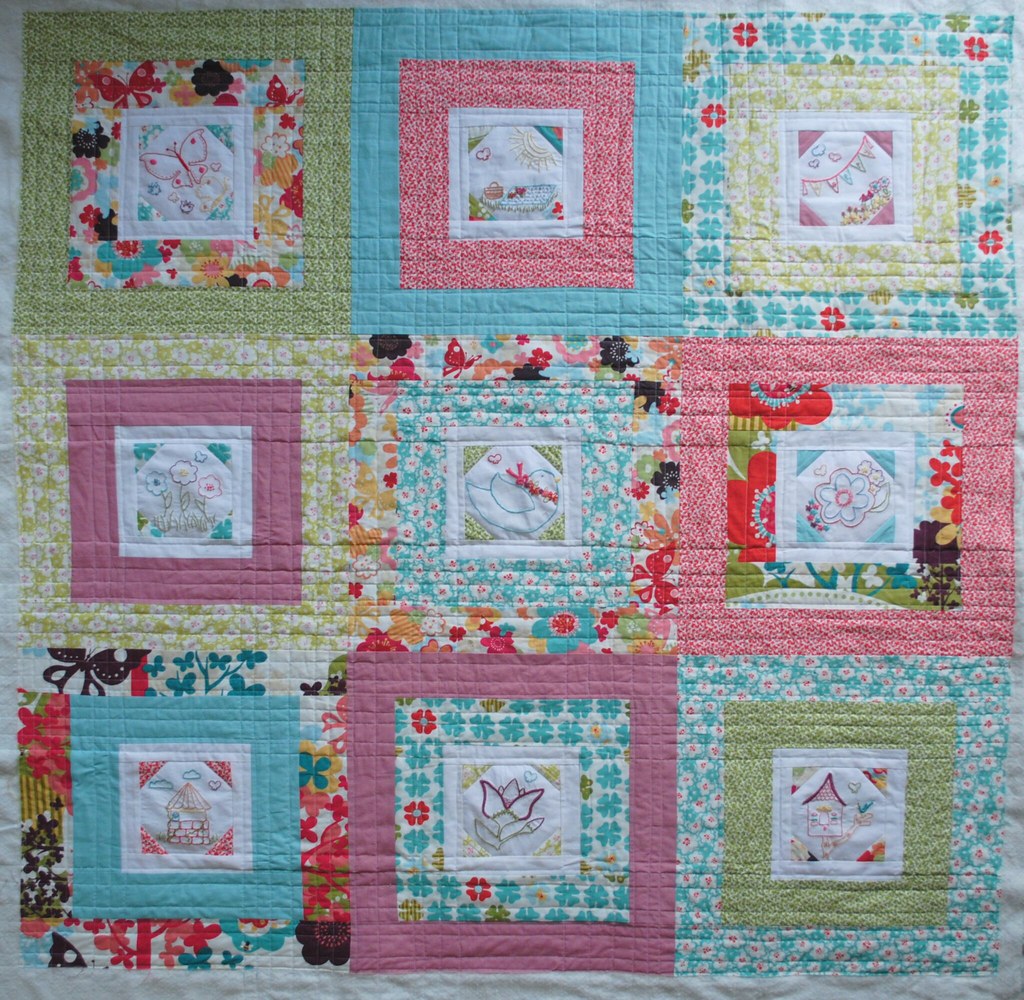
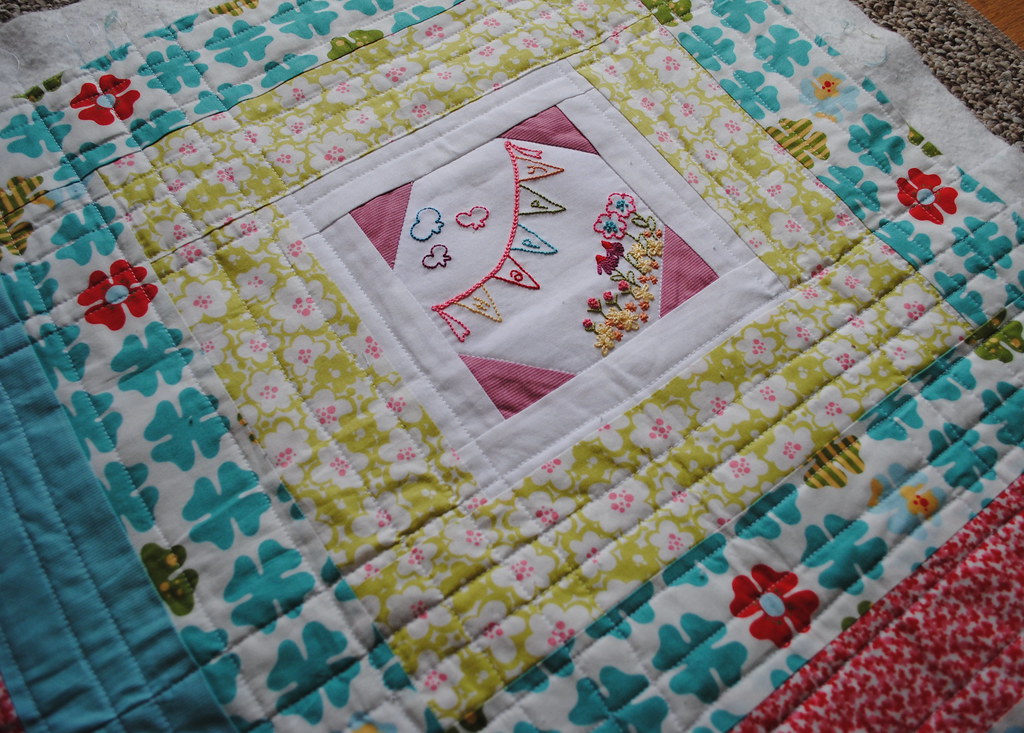

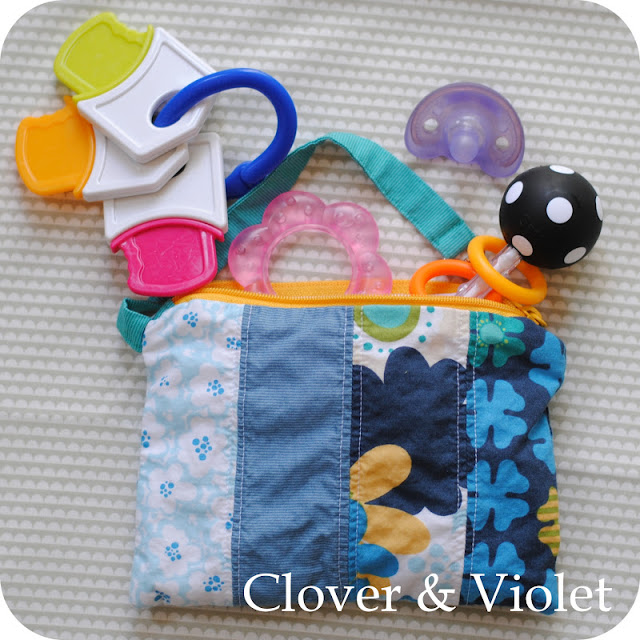
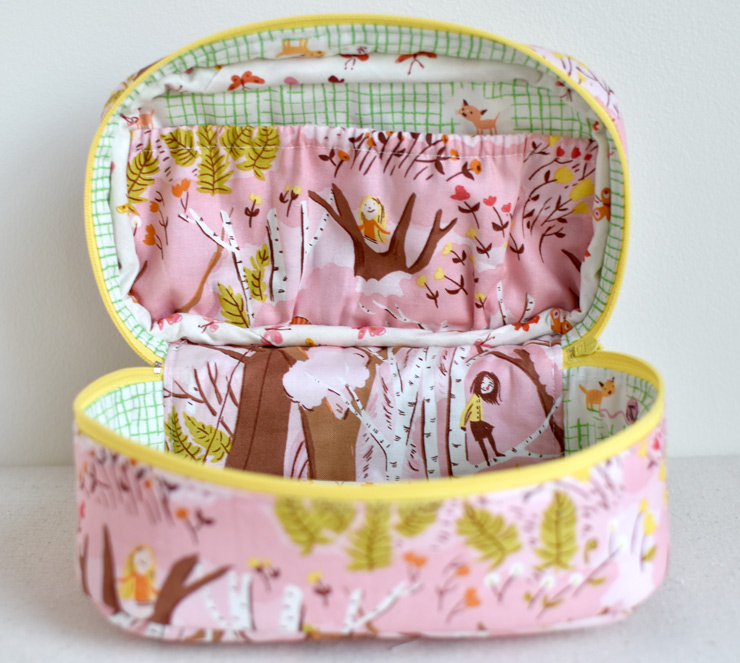
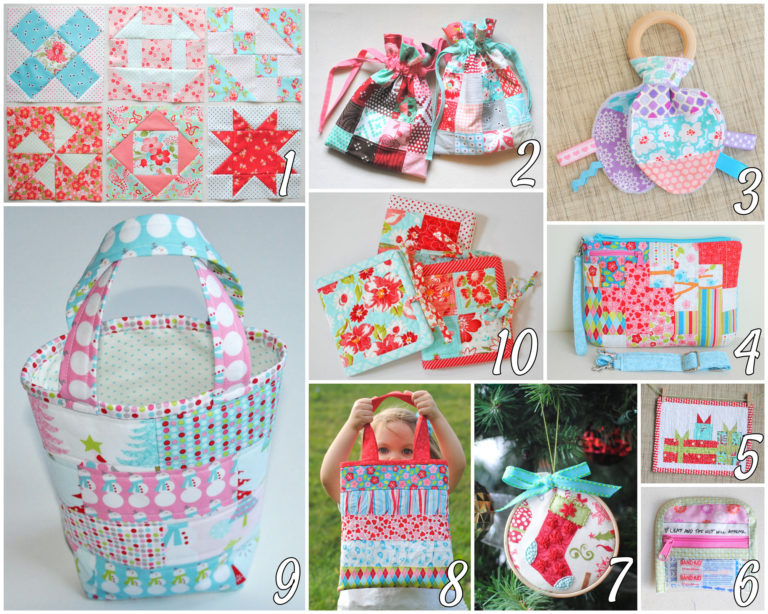
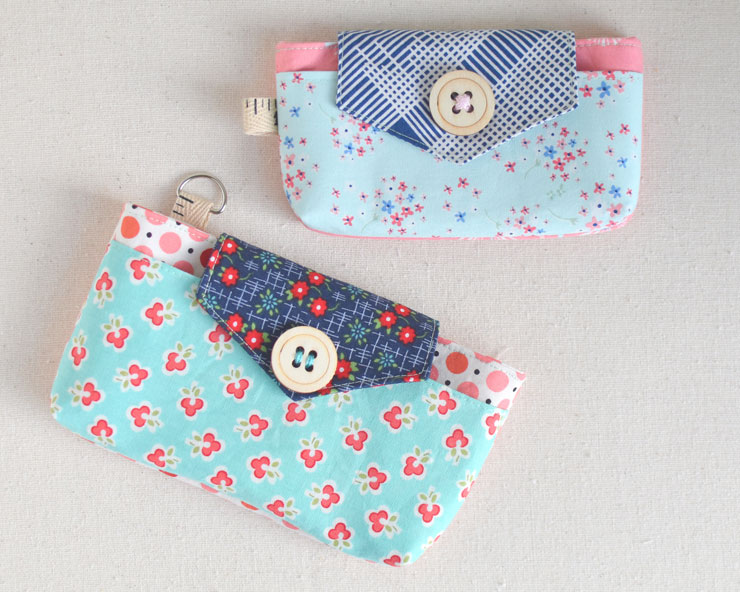
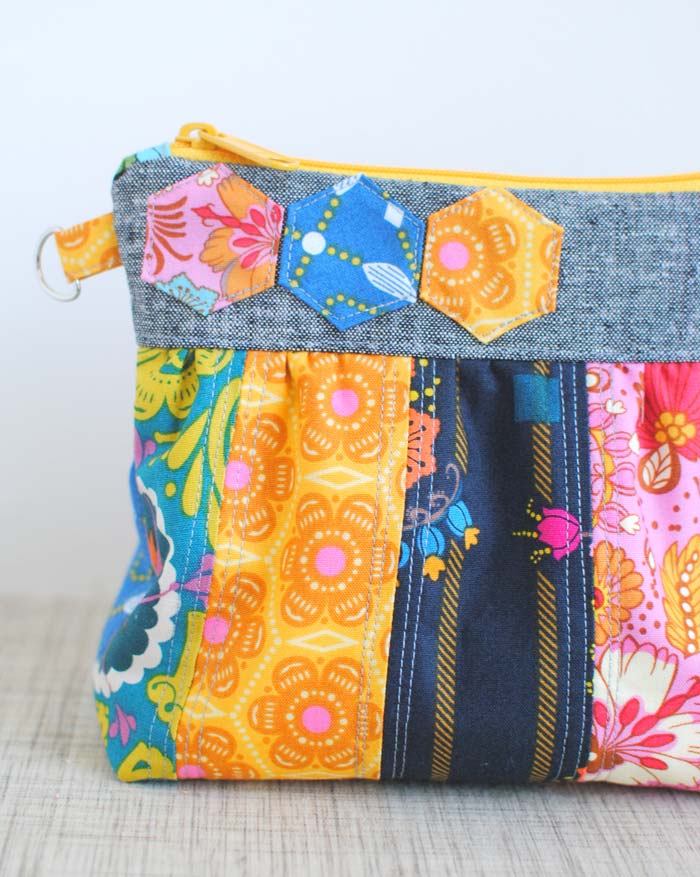
Wow. My method has been so much more labor intensive. I have been taping down all three layers separately, pulling tight-but not too tight to stretch, and safety pinning every 3-4 inches. I use a walking foot, tension is perfect….And it still bunches! You make it look so easy:)
@Melanie, I used to use lots of pins too, but found that they didn’t really make much of a difference. In fact, the fewer pins may help the fabric have more of a chance to smooth out {I don’t even bother trying to make it tight because I have a little boy that runs across it constantly}. And, as I mentioned, I do take the pins out as I go, I found there were lots of bunches and folds around pins if I didn’t. While it makes the quilting more labor intensive, it seems to help with the puckering on the back. Hope that helps you out!
I agree, you make it sound so easy! All my stuff always bunches, too, but I think it’s operator error more than anything else. Thanks for sharing this though because next time I make a quilt I will do it this way and maybe it will turn out nicer. (and I will need to make at least one more, for my second daughter; and I’d like to make a new one for my bed…which is a king. Maybe I’ll make four small ones and sew them together!)
The only thing I would add is that it is important to stitch your lines in different directions. This will keep the stretch even all the way around. Does that make any sense?